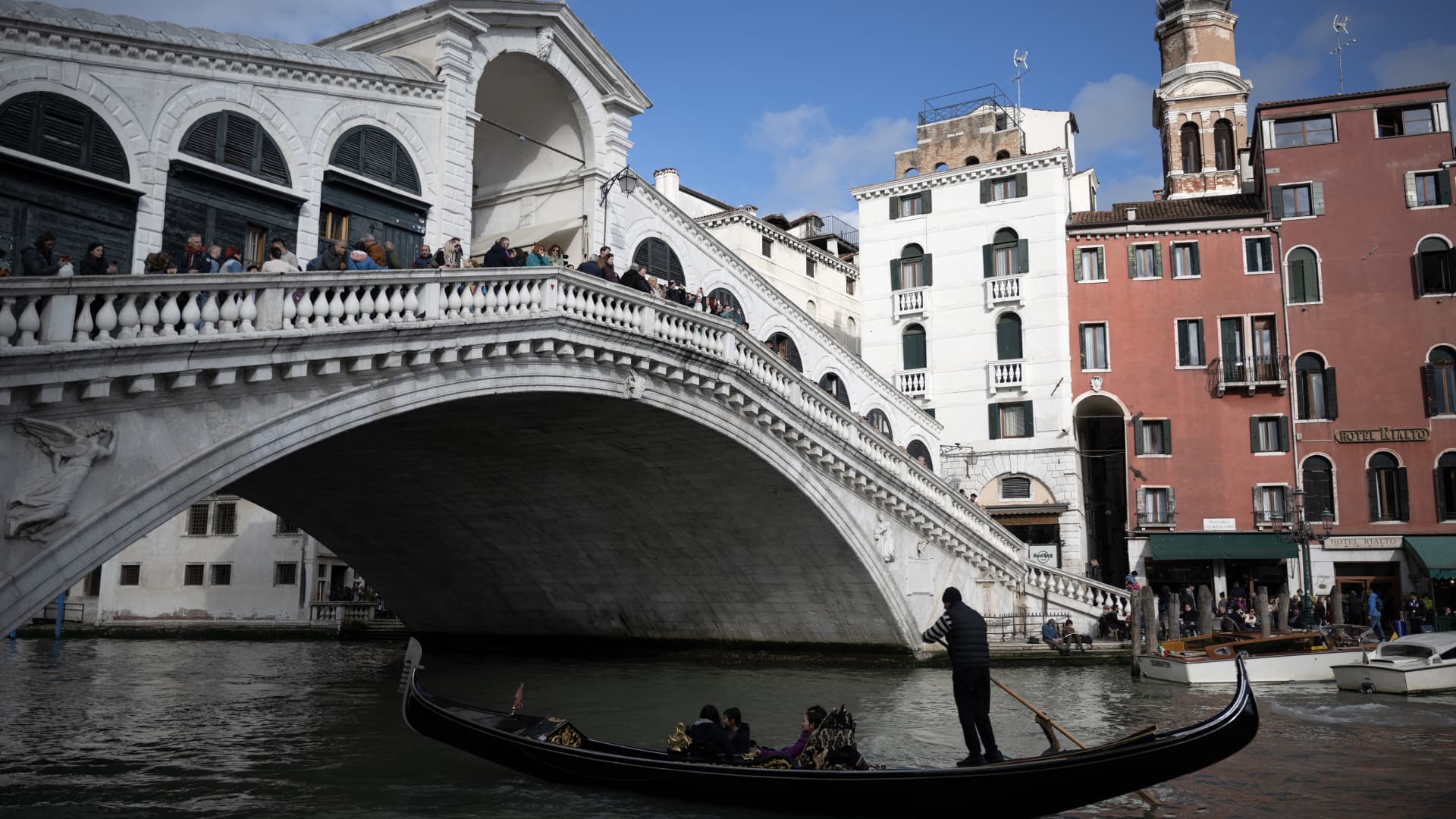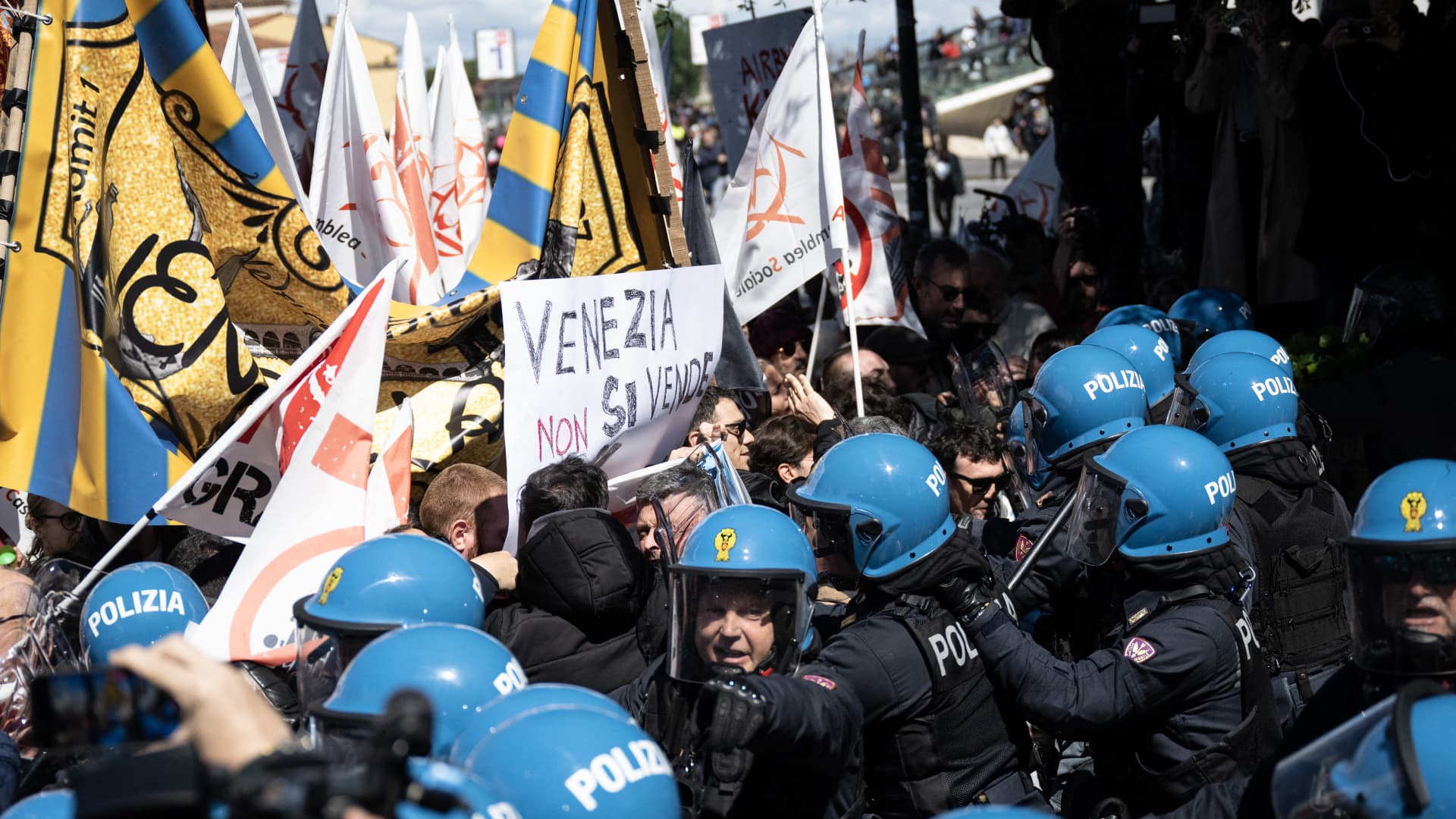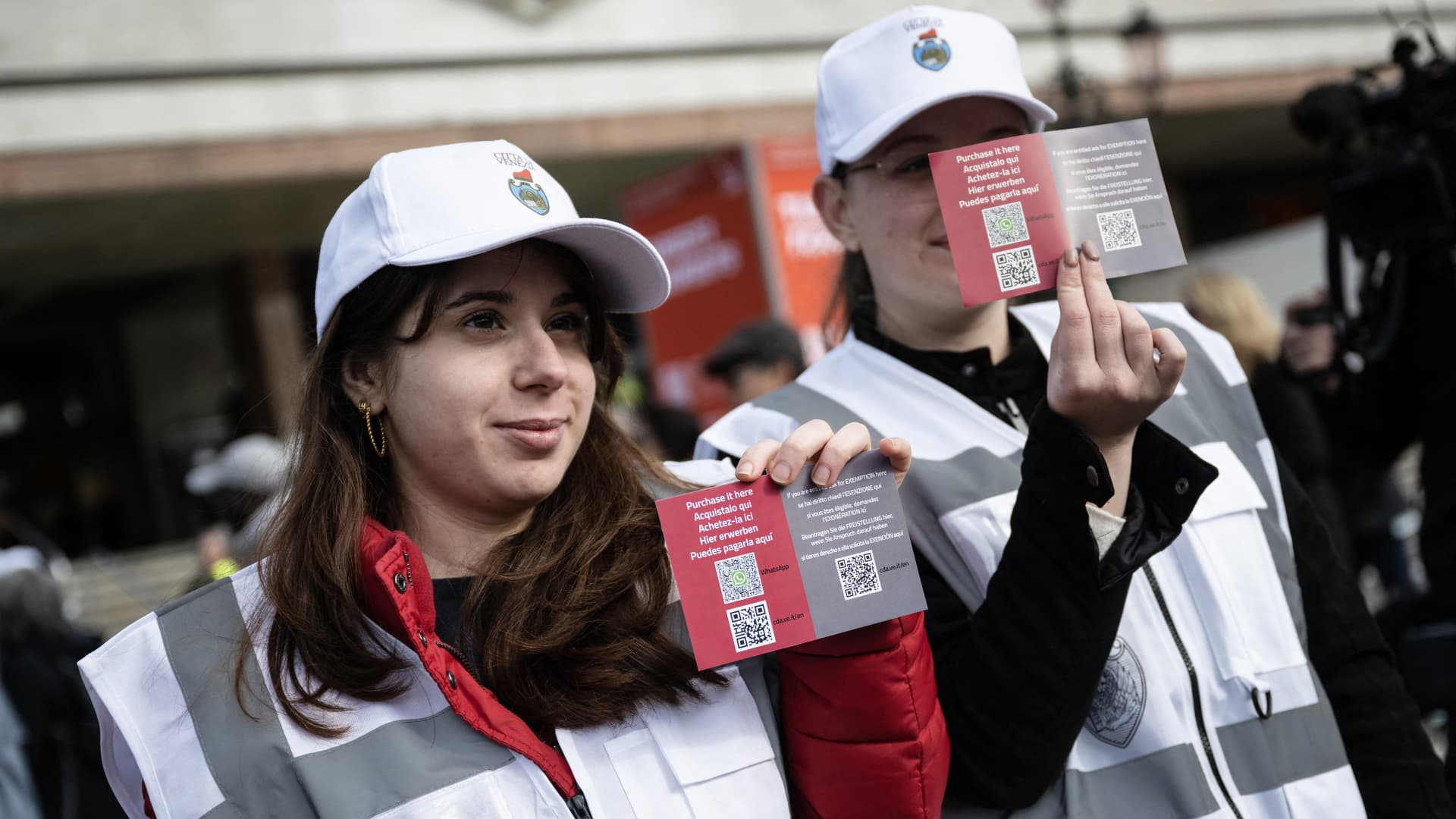
- The pilot program means that day-trippers going to Venice, one of Italy's most picturesque and historic cities, will need to pay a charge of 5 euros (US$5.40).
- Municipal workers on Thursday were seen checking the tickets of day-trippers outside the front of the fragile lagoon city's Santa Lucia railway station, while signs had been erected to warn tourists about the payment program.
- Luigi Brugnaro, Venice's mayor, said via social media earlier in the week that Venice would be the first major city to experiment with the payment program, "although overtourism is not a problem that only concerns this city."

Venice became the first city in the world to charge a payment for tourists in an attempt to alleviate the pressures of mass tourism and make the city more livable for its residents.
The pilot program will exact a fee of 5 euros (US$5.40) from day-trippers going to Venice, one of Italy's most picturesque and historic cities. The new fee came into effect on Thursday.
Municipal workers were seen checking the tickets of day-trippers outside the front of the fragile lagoon city's Santa Lucia railway station. Signs had been erected to warn tourists about the payment program.
The charge applies to tourists arriving between 8:30 a.m. and 4 p.m. local time, while access is free outside of those hours. Day-trippers who fail to pay the fee face fines between 50 euros (about US$53) and 300 euros (about US$322).
Overnight travelers who stay within the municipality of Venice are exempt from the charge but must have a QR code to pass through the gates located at the main access points of the city. Reuters reported that a booth has been set up for visitors without access to a smartphone.
Money Report
Protesters on Thursday were seen clashing with riot police over the pilot program, with some trying to break through a blockade of officers at Piazzale Roma to enter the city.
Others held banners that read, "No to ticket, Yes to houses and services for all" and "Venice is not sold, it is defended" as they rallied against the measure.

Venice Mayor Luigi Brugnaro on Thursday said that the first objective of the charge, "that of the cultural transition, seems to me to have been achieved."
"With courage and great humility we are introducing this system because we want to give a future to Venice and leave this heritage of humanity to future generations," Brugnaro said in a Google-translated post on social media platform X.
On Tuesday, Brugnaro in a separate post on X said that, while Venice would be the first major city to experiment with the payment program, "overtourism is not a problem that only concerns this city."
"Through this measure we want to improve the quality of life in #Venezia, we want to make it safer, cleaner and with more services, in order to guarantee citizens and visitors peace of mind," Brugnaro said.
Venice has toyed with the idea of taxing day visitors for years, as one of several measures to curb overtourism. Locals have long blamed overtourism for driving up prices and transforming the city into a souvenir-laden theme park of sorts.
Residents, specifically the estimated 50,000 who live in the city's historic area, are far outnumbered by the some 5.5 million who visited the city in 2019, according to Statista data. Many of these tourists disembark from cruise ships by the thousands to take photographs of Venice's famous canals and city squares.

— CNBC's Monica Pitrelli contributed to this report.






